No Products in the Cart
INDOOR THCA FLOWER 5g - $39.99 | GREENHOUSE THCA FLOWER 7g - $34.99
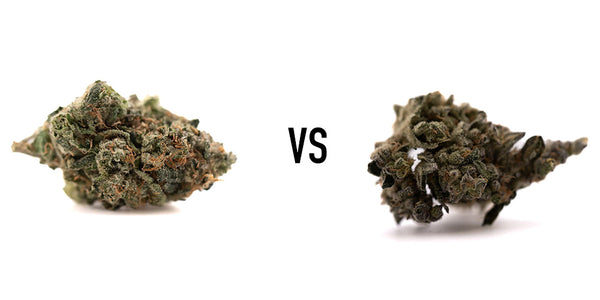
Choosing between premium THCa flower strains can feel overwhelming, especially when comparing two industry favorites like Humboldt Indoor THCa and Green Crack THCa. With the explosive growth of the THCa flower market in 2025, consumers are demanding more detailed information to make informed purchasing decisions. This comprehensive THCa strain comparison will break down everything you need to know about these two exceptional indoor THCa flower comparison options.
Before diving into our detailed comparison, it's essential to understand what sets THCa apart from traditional THC. THCa (tetrahydrocannabinolic acid) is the non-psychoactive precursor to THC found in raw cannabis plants. When heated through smoking, vaping, or cooking, THCa converts to THC through a process called decarboxylation. This unique characteristic makes THCa flower legal in many jurisdictions where traditional THC products remain restricted.
Our Humboldt THCa vs Green Crack analysis will examine five critical comparison criteria: strain origins and genetics, THCa content and potency, terpene profiles, effects and user experience, and the advantages of indoor cultivation methods. Whether you're seeking relaxation after a long day or looking for an energizing daytime boost, this guide will help you determine which strain aligns with your specific needs and preferences.
The Humboldt Indoor THCa Flower represents the pinnacle of Northern California's legendary cannabis cultivation tradition. Originating from the renowned Humboldt County region, this strain carries the genetic legacy of indoor grown THCa flower perfection that has made the area synonymous with premium cannabis for decades.
Humboldt's genetic profile leans heavily toward indica-dominant characteristics, typically featuring a 70% indica to 30% sativa ratio. This genetic composition translates into the strain's signature relaxing properties and robust physical effects. The strain's lineage can be traced back to classic indica landrace varieties, carefully selected and bred over generations to produce consistent, high-quality flowers with exceptional THCa concentrations.
The indica-dominant genetics contribute to Humboldt's distinctive growth patterns, including shorter, bushier plants with dense, resinous buds. These characteristics make it particularly well-suited for Humboldt indoor flower cultivation, where environmental controls can maximize the strain's natural tendency to produce heavy, trichome-laden flowers rich in THCa and complementary cannabinoids.
In contrast, the Green Crack Indoor THCa Flower brings a completely different genetic profile to the table. This sativa-dominant strain, typically expressing a 65% sativa to 35% indica ratio, traces its lineage to classic energizing varieties that have been refined through decades of selective breeding.
Green Crack's genetics originate from a cross between Skunk #1 and an unknown indica strain, resulting in a hybrid that captures the best of both worlds while maintaining its sativa-forward characteristics. The strain's name, while controversial, accurately reflects its reputation for delivering an intense, crack-like surge of energy and mental clarity that has made it a favorite among daytime users.
The sativa-dominant genetics manifest in Green Crack's growth characteristics, producing taller plants with longer internodal spacing and more elongated bud structures. When grown indoors, these traits require specific cultivation techniques to maximize yield and potency, making the cannabis strain comparison between these strains particularly interesting from a cultivation perspective.
The fundamental genetic differences between these strains create dramatically different user experiences. Humboldt's indica heritage typically produces effects that are deeply relaxing, physically sedating, and ideal for evening use or stress relief. Users often report a gradual onset of effects that build into a full-body relaxation experience.
Green Crack's sativa genetics, conversely, tend to produce immediate, cerebral effects characterized by increased energy, enhanced focus, and heightened creativity. The strain's genetic predisposition toward mental stimulation makes it particularly popular among users seeking productivity enhancement or social engagement.
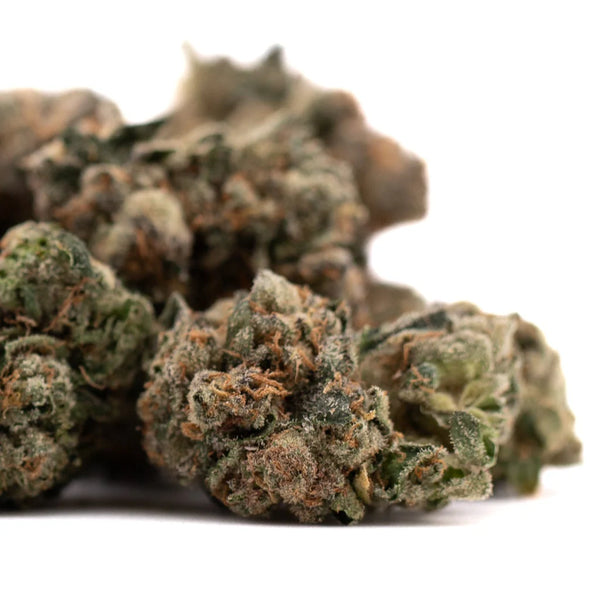
When evaluating Green Crack THCa effects, potency analysis requires understanding both total THCa content and potential THC conversion rates. Modern laboratory testing provides detailed cannabinoid profiles that reveal not just THCa percentages, but also the presence of other beneficial compounds like CBD, CBG, and CBN.
High-quality indoor grown THCa flower typically tests between 20-30% THCa content, with premium specimens occasionally reaching even higher concentrations. The controlled environment of indoor cultivation allows cultivators to optimize growing conditions specifically for maximum THCa production, resulting in consistently potent products that meet or exceed consumer expectations.
Laboratory testing of premium Humboldt Indoor THCa consistently shows impressive cannabinoid profiles. Recent batch analyses reveal THCa concentrations ranging from 24-28%, with total cannabinoid content often exceeding 30% when including minor cannabinoids and residual compounds.
The strain's indica-dominant genetics contribute to dense trichome production, creating flowers with exceptional resin coverage that translates directly to higher THCa concentrations. Indoor cultivation methods further enhance potency by allowing precise control over environmental factors that influence cannabinoid biosynthesis, including temperature, humidity, light spectrum, and nutrient availability.
When subjected to decarboxylation through heating, Humboldt's THCa converts to THC at approximately 87.7% efficiency, meaning a flower testing at 25% THCa would produce roughly 22% active THC. This conversion rate, combined with the strain's complementary terpene profile, creates a potent experience that reflects both the quantity and quality of cannabinoids present.
Green Crack Indoor THCa demonstrates equally impressive potency metrics, with laboratory results consistently showing THCa concentrations between 22-26%. While slightly lower than some indica-dominant varieties, the strain's sativa genetics contribute to a cannabinoid profile that produces distinctly different effects despite similar raw potency numbers.
The strain's terpene-to-cannabinoid ratio plays a crucial role in its perceived potency. Green Crack's high concentrations of energizing terpenes like limonene and pinene create an entourage effect that amplifies the psychoactive experience, making the strain feel more potent than THCa percentages alone might suggest.
Indoor cultivation of Green Crack requires specific techniques to maximize THCa production while maintaining the strain's characteristic terpene profile. Successful indoor grows often implement specialized lighting schedules and environmental controls that stress the plants in beneficial ways, encouraging maximum resin production during the final weeks of flowering.
The bioavailability of THCa varies significantly depending on consumption method, affecting how users experience each strain's potency. Smoking or vaping provides immediate decarboxylation and rapid onset, with effects typically beginning within minutes. This delivery method showcases the full potency potential of both Humboldt and Green Crack strains.
Alternative consumption methods, such as incorporating raw THCa flower into edibles or tinctures, require additional decarboxylation steps to activate the THC. However, some users prefer consuming raw THCa for its potential therapeutic benefits without psychoactive effects, making high-potency strains valuable for both activated and non-activated applications.

Terpenes represent the aromatic compounds that give cannabis strains their distinctive scents and flavors while significantly influencing their effects through the entourage effect. Modern cannabis strain comparison analysis must consider terpene profiles as equally important to cannabinoid content, as these compounds work synergistically to create each strain's unique experience.
The best indoor THCa strains 2025 are distinguished not only by high THCa content but also by complex, well-preserved terpene profiles that indoor cultivation methods can optimize and protect. Controlled environmental conditions prevent terpene degradation while allowing cultivators to manipulate growing conditions to enhance specific terpene production.
Humboldt's terpene profile reflects its indica-dominant genetics, featuring a complex blend dominated by myrcene, limonene, and caryophyllene. This combination creates the strain's signature relaxing and sedating effects while contributing to its distinctive earthy, citrusy aroma with subtle spicy undertones.
Myrcene serves as the primary terpene in most Humboldt phenotypes, typically comprising 0.8-1.2% of the total terpene content. Known for its sedating properties, myrcene contributes to the strain's reputation as an effective evening or nighttime option. Research suggests myrcene enhances THC's psychoactive effects while promoting muscle relaxation and sleep.
Limonene provides Humboldt's citrus notes while contributing mood-elevating properties that balance the strain's predominantly sedating effects. Concentrations typically range from 0.4-0.8%, creating a subtle brightness that prevents the strain from becoming overly heavy or couch-locking for most users.
Caryophyllene rounds out the primary terpene trio, adding spicy, peppery notes while providing potential anti-inflammatory benefits. This terpene's unique ability to interact with CB2 receptors may contribute to Humboldt's reported therapeutic benefits for pain and inflammation management.
Green Crack's terpene profile showcases its sativa heritage through high concentrations of energizing compounds. The strain typically features limonene, caryophyllene, and pinene as its dominant terpenes, creating an aromatic bouquet that's both invigorating and complex.
Limonene dominates Green Crack's terpene content, often comprising 1.0-1.5% of total terpenes. This citrus terpene contributes to the strain's uplifting, mood-enhancing effects while providing the distinctive sweet, tangy aroma that makes Green Crack instantly recognizable. High limonene concentrations correlate with increased energy and mental clarity.
Pinene appears in both alpha and beta forms within Green Crack, contributing to the strain's energizing effects while adding fresh, pine-like aromatics. Research suggests pinene may enhance alertness and memory retention while counteracting some of THC's potential short-term memory effects.
Caryophyllene provides complexity to Green Crack's terpene profile, adding subtle spicy notes while potentially offering anti-inflammatory benefits. The presence of this terpene helps balance the strain's stimulating effects, preventing excessive anxiety or jitters that can sometimes accompany high-energy sativa strains.
Indoor cultivation methods offer significant advantages for terpene preservation compared to outdoor growing. Controlled environments allow cultivators to maintain optimal temperature and humidity levels during the critical final weeks of flowering when terpene production peaks. This control results in indoor grown THCa flower with more pronounced, complex aromatic profiles.
Proper curing and storage techniques further preserve terpene integrity, ensuring that consumers receive flowers with full aromatic and therapeutic potential. The combination of optimal growing conditions and careful post-harvest handling makes indoor-grown strains like these premium Humboldt vs Green Crack THCa review options particularly valuable for users who prioritize terpene complexity.
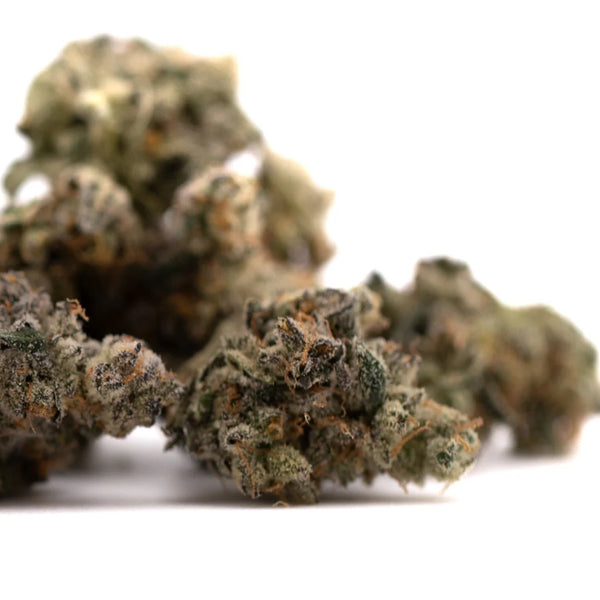
The effects profile of Humboldt Indoor THCa reflects its indica-dominant genetics and myrcene-heavy terpene composition. Users consistently report a gradual onset of effects that begins with subtle mental relaxation before developing into comprehensive physical comfort. This progression makes Humboldt ideal for users seeking stress relief after demanding days or those dealing with physical discomfort.
Physical Effects: Humboldt's primary appeal lies in its pronounced physical effects. Users frequently describe a warm, enveloping sensation that begins in the shoulders and neck before spreading throughout the body. This full-body relaxation can be particularly beneficial for individuals dealing with muscle tension, chronic pain, or physical stress from work or exercise.
The strain's sedating properties make it exceptionally well-suited for evening use, with many users reporting improved sleep quality when consumed 1-2 hours before bedtime. Unlike some heavily sedating indica strains, Humboldt typically allows users to remain functional while experiencing significant relaxation, making it versatile for various evening activities.
Mental Effects: While primarily known for physical relaxation, Humboldt also provides notable mental benefits. Users often report decreased anxiety, reduced racing thoughts, and an overall sense of mental calm. The strain's effects can be particularly valuable for individuals dealing with stress-related mental fatigue or those seeking to unwind from cognitively demanding activities.
The mental effects typically complement rather than overwhelm the physical relaxation, creating a balanced experience that many users find therapeutic. Some report enhanced introspection and emotional processing, making Humboldt potentially valuable for meditation or personal reflection sessions.
Duration and Intensity: Effects from Humboldt Indoor THCa typically last 2-4 hours when smoked or vaped, with peak effects occurring 30-60 minutes after consumption. The intensity tends to be moderate to strong, with experienced users often able to maintain functionality while newcomers may find the effects more pronounced.
Green Crack THCa delivers a markedly different experience, characterized by immediate mental stimulation and sustained energy that makes it ideal for daytime use. The strain's sativa-dominant genetics and energizing terpene profile create effects that many users find conducive to productivity, creativity, and social interaction.
Mental Effects: Green Crack's most notable characteristic is its ability to provide clear, focused mental energy without the jittery side effects sometimes associated with caffeine or other stimulants. Users frequently report enhanced concentration, improved mood, and increased motivation to tackle challenging projects or engage in creative activities.
The strain's mental effects often include heightened sensory perception, making music more enjoyable, colors more vivid, and conversations more engaging. This sensory enhancement, combined with increased sociability, makes Green Crack popular for social gatherings, creative projects, and recreational activities.
Physical Effects: While primarily cerebral, Green Crack also provides subtle physical effects that complement its mental stimulation. Users often report feeling more energetic and physically motivated, with some describing a light, uplifting body sensation that enhances rather than impairs physical activity.
Unlike sedating strains, Green Crack tends to encourage movement and activity. Many users find it excellent for exercise, outdoor activities, or any situation requiring sustained physical energy combined with mental alertness.
Duration and Intensity: Green Crack's effects typically begin within minutes of consumption and can last 2-3 hours. The intensity is generally moderate, allowing most users to remain highly functional while experiencing the strain's benefits. This characteristic makes it particularly valuable for users who need to maintain productivity while enjoying cannabis effects.
Humboldt User Experiences: Long-term users of Humboldt Indoor THCa frequently praise its consistency and therapeutic value. One medical user reports: "I've been using Humboldt for chronic back pain for six months, and it's been life-changing. The relief is significant without making me too drowsy to function in the evenings."
Professional users often appreciate Humboldt's ability to provide stress relief without complete sedation. A teacher shared: "After particularly challenging days at work, Humboldt helps me decompress and transition into evening family time without feeling completely checked out."
Green Crack User Experiences: Green Crack users consistently highlight the strain's energizing properties and versatility for daytime activities. A freelance designer noted: "Green Crack has become essential for my creative process. It helps me focus for hours while keeping my creative energy high."
Students and professionals often praise Green Crack's productivity-enhancing effects. One graduate student explained: "I use Green Crack for study sessions because it keeps me alert and engaged with the material without the crash that comes with caffeine."
The choice between Humboldt and Green Crack ultimately depends on intended use, timing, and personal effects preferences. Humboldt excels as an evening strain for users seeking relaxation, stress relief, and improved sleep quality. Its effects make it particularly valuable for individuals dealing with physical discomfort, work-related stress, or anxiety.
Green Crack shines as a daytime option for users who want to enhance productivity, creativity, and social engagement while maintaining full functionality. Its energizing effects make it ideal for work, creative projects, exercise, and social activities where mental clarity and physical energy are beneficial.
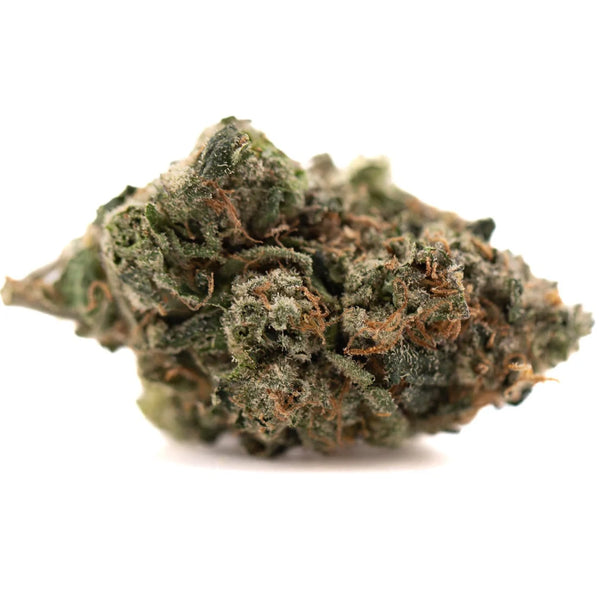
Indoor cultivation represents the gold standard for indoor THCa flower comparison because it allows complete environmental control throughout the growing cycle. Unlike outdoor cultivation, which depends on weather patterns and seasonal changes, indoor growing enables cultivators to create optimal conditions specifically tailored to each strain's genetic requirements.
Temperature control stands as one of the most critical advantages of indoor cultivation. Both Humboldt and Green Crack THCa strains benefit from precise temperature management, with optimal ranges varying between vegetative and flowering stages. Indoor facilities can maintain temperatures within 1-2 degrees of target ranges, ensuring consistent cannabinoid and terpene development throughout the entire crop.
Humidity control provides another significant advantage, particularly during the final weeks of flowering when trichome production peaks. Maintaining optimal humidity levels prevents mold and mildew while encouraging maximum resin production. This control directly translates to higher THCa concentrations and better-preserved terpene profiles in the final product.
Lighting systems in modern indoor facilities can be precisely calibrated to provide optimal photosynthetic conditions while manipulating light spectrums to encourage specific plant responses. LED technology allows cultivators to adjust light spectrums throughout the growing cycle, promoting vegetative growth with blue-heavy spectrums and encouraging flowering with red-enhanced light.
Indoor cultivation delivers unparalleled consistency between harvests, ensuring that consumers receive products that meet their expectations every time. This consistency is particularly important for medical users who depend on specific effects and potency levels for therapeutic applications.
Batch-to-Batch Reliability: Indoor-grown Humboldt and Green Crack strains exhibit minimal variation between harvests when grown under controlled conditions. Laboratory testing of multiple batches typically shows THCa content variations of less than 2-3%, compared to outdoor crops that may vary by 5-10% or more depending on environmental conditions.
Predictable Terpene Profiles: Controlled environments allow cultivators to optimize conditions for terpene preservation and development. Indoor-grown flowers typically maintain more consistent aromatic profiles, ensuring that the distinctive characteristics that define each strain remain prominent harvest after harvest.
Harvest Timing Optimization: Indoor cultivators can monitor trichome development and harvest at the precise moment when THCa content and terpene concentrations reach their peak. This timing control, impossible with outdoor cultivation, results in products with maximum potency and therapeutic value.
Modern indoor facilities often employ integrated pest management (IPM) strategies that minimize or eliminate the need for chemical pesticides. Controlled environments make it easier to prevent pest infestations through environmental manipulation, beneficial insects, and organic deterrents.
Preventive Measures: Indoor facilities can implement air filtration systems, positive air pressure, and quarantine protocols that prevent most pest issues before they begin. These preventive approaches reduce the need for any pest control interventions, whether organic or synthetic.
Beneficial Insect Programs: When pest control becomes necessary, indoor facilities can introduce beneficial insects like ladybugs, predatory mites, or parasitic wasps that target specific pests without affecting the cannabis plants or leaving residues on the final product.
Organic Solutions: When additional intervention is required, indoor cultivators can employ organic solutions like neem oil, insecticidal soaps, or botanical extracts that break down completely before harvest, leaving no residues on the final product.
The combination of preventive measures and organic solutions typically results in indoor grown THCa flower that tests clean for pesticide residues, providing consumers with confidence in product safety and purity.
Indoor facilities can implement sophisticated cultivation techniques that would be impossible or impractical in outdoor settings. These advanced methods contribute to the superior quality that distinguishes premium indoor THCa flower from other cultivation methods.
Hydroponic and Aeroponic Systems: Many indoor facilities employ soilless growing methods that provide precise nutrient control and faster growth rates. These systems allow cultivators to adjust nutrient formulations throughout the growing cycle, optimizing plant health and cannabinoid production.
CO2 Supplementation: Indoor environments can be enriched with additional carbon dioxide during the vegetative and early flowering stages, promoting faster growth and increased yields. CO2 supplementation, combined with optimal lighting and environmental conditions, can increase THCa production by 15-20% or more.
Training and Pruning Techniques: Indoor cultivators can implement sophisticated plant training methods like Screen of Green (SCROG), Low Stress Training (LST), and selective pruning that maximize light penetration and encourage even canopy development. These techniques result in more uniform bud development and higher overall yields of premium-quality flowers.
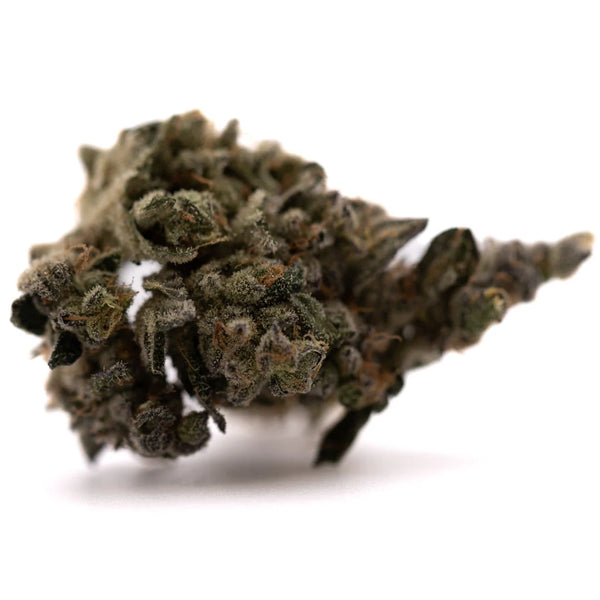
Both Humboldt and Green Crack THCa perform excellently when smoked or vaped, but each strain's characteristics shine through different consumption methods. Understanding optimal consumption techniques can significantly enhance the experience and value derived from these premium strains.
Smoking Characteristics: When smoked, Humboldt produces smooth, flavorful smoke with minimal harshness even at higher temperatures. The strain's terpene profile creates a pleasant, earthy taste with citrus undertones that many users find appealing. Green Crack, conversely, produces bright, energizing smoke with distinctive citrus and pine flavors that reflect its terpene composition.
Vaping Optimization: Vaping allows users to experience the full terpene profiles of both strains while avoiding combustion byproducts. Humboldt's terpenes are well-preserved at lower vaping temperatures (320-350°F), allowing users to experience the full complexity of its myrcene and limonene content. Green Crack benefits from slightly higher vaping temperatures (350-380°F) that fully activate its energizing terpene compounds.
Temperature Control Benefits: Precise temperature control through quality vaping devices allows users to customize their experience with each strain. Lower temperatures tend to emphasize terpene flavors and provide more subtle effects, while higher temperatures increase potency and produce more pronounced experiences.
Edible Applications: Both strains can be decarboxylated and incorporated into edibles, though their effects profiles translate differently to oral consumption. Humboldt's relaxing properties make it excellent for evening edibles, while Green Crack's energizing characteristics can create potent daytime edible experiences.
Tincture Preparation: High-quality THCa flower from both strains can be used to create potent tinctures that preserve much of the original terpene complexity. Tinctures offer precise dosing control and faster onset than traditional edibles while providing longer-lasting effects than smoking or vaping.
The primary difference lies in their genetic profiles and resulting effects. Humboldt is indica-dominant, providing relaxing, sedating effects ideal for evening use and stress relief. Green Crack is sativa-dominant, delivering energizing, focus-enhancing effects perfect for daytime productivity and creativity.
Both strains typically test between 22-28% THCa, with Humboldt often showing slightly higher percentages due to its indica genetics and dense trichome production. However, the difference is usually minimal, and both provide potent experiences when properly cultivated and cured.
Green Crack may be more beginner-friendly due to its energizing effects that don't typically cause couch-lock or excessive sedation. Humboldt's relaxing effects can be overwhelming for new users if consumed in large quantities, so beginners should start with smaller amounts and gradually increase as tolerance develops.
Indoor cultivation provides superior environmental control, resulting in more consistent potency, better terpene preservation, and cleaner products free from pesticides and environmental contaminants. Indoor grown THCa flower comparison shows less batch-to-batch variation and maintains higher overall quality standards.
Both strains offer medical benefits, but for different conditions. Humboldt excels for pain management, anxiety, insomnia, and muscle tension. Green Crack is better suited for depression, fatigue, lack of focus, and appetite stimulation. Medical users should choose based on their specific therapeutic needs.
Both strains should be stored in airtight containers in cool, dark places to preserve THCa content and terpene profiles. Glass jars with humidity control packs can maintain optimal moisture levels and prevent degradation. Proper storage can preserve quality for 6-12 months or longer.
Humboldt is best used in the evening or nighttime due to its relaxing, potentially sedating effects. Green Crack is ideal for daytime use, particularly morning or afternoon when you need energy, focus, and productivity enhancement.
Both strains typically show effects within minutes when smoked or vaped, but their progression differs. Green Crack often provides immediate mental stimulation, while Humboldt's effects may build more gradually, starting with mental relaxation before developing into physical comfort.
The Humboldt THCa vs Green Crack comparison reveals two exceptional strains that excel in different applications and user scenarios. Understanding their distinct characteristics, effects profiles, and optimal use cases enables consumers to make informed decisions based on their specific needs and preferences.
Humboldt Indoor THCa stands out as the superior choice for users seeking relaxation, stress relief, and evening comfort. Its indica-dominant genetics, myrcene-heavy terpene profile, and consistently high THCa content make it ideal for managing physical discomfort, anxiety, and sleep issues. The strain's ability to provide deep relaxation without complete sedation offers versatility for various evening activities while supporting therapeutic applications.
Green Crack THCa emerges as the clear winner for daytime use, productivity enhancement, and creative endeavors. Its sativa-dominant genetics, energizing terpene composition, and uplifting effects create an ideal choice for users who want to maintain functionality while enjoying cannabis benefits. The strain's ability to enhance focus, boost energy, and improve mood makes it valuable for professional and recreational applications alike.
Both strains benefit tremendously from indoor cultivation methods that ensure consistency, potency, and purity. The controlled environment advantages of indoor growing translate directly to superior product quality that justifies premium pricing for discerning consumers who prioritize reliability and excellence.
For users still undecided between these exceptional options, consider your primary use goals: choose Humboldt for relaxation and evening use, or select Green Crack for energy and daytime productivity. Many experienced users find value in having both strains available to match their varying daily needs and activities.
The best indoor THCa strains 2025 represent the culmination of decades of breeding expertise, cultivation refinement, and quality control advances. Both Humboldt and Green Crack exemplify these achievements, offering consumers access to premium cannabis experiences that were previously unavailable or inconsistent.
Whether you prioritize the therapeutic relaxation of Humboldt Indoor THCa Flower or the energizing productivity boost of Green Crack Indoor THCa Flower, both options represent excellent investments in premium cannabis quality and consistency that will enhance your cannabis experience while delivering the specific effects you seek.
This comprehensive indoor THCa flower comparison demonstrates that both strains deserve their positions among the THCa best sellers, each excelling in their respective niches while offering the quality, consistency, and potency that define premium cannabis products in 2025.